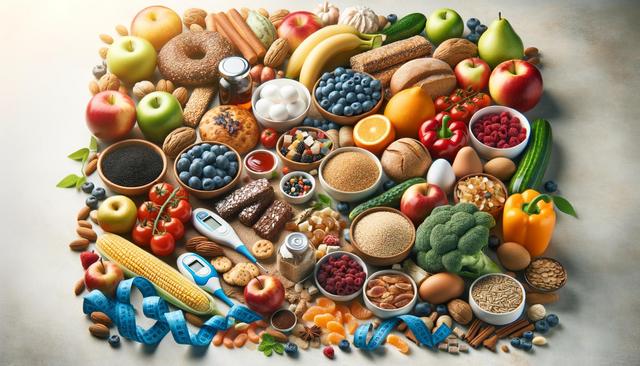The Power of High-Fiber Foods for Blood Sugar Control
Fiber plays a critical role in managing blood glucose levels. High fiber foods for blood sugar control slow down digestion, which can lead to more stable glucose absorption and fewer spikes. This makes them a key component in any diabetic-friendly diet. Soluble fiber, in particular, helps to lower blood sugar by improving insulin sensitivity and slowing carbohydrate breakdown. Some excellent choices include:
- Oats
- Lentils
- Beans and legumes
- Chia seeds
- Barley
Including these foods in meals not only supports digestive health but also aligns with a meal plan for balanced blood sugar. Aim to fill at least half your plate with vegetables and fiber-rich grains to create a steady release of energy throughout the day.
Low Glycemic Foods for Blood Sugar Support
Foods are ranked on the glycemic index (GI) based on how quickly they raise blood sugar levels. Low glycemic foods for blood sugar tend to be digested more slowly, resulting in a gradual rise in glucose. Choosing these foods can be an effective way to avoid rapid spikes. Some well-regarded low GI foods include:
- Sweet potatoes
- Non-starchy vegetables like broccoli and spinach
- Apples and pears
- Whole grains such as quinoa and bulgur
- Legumes
Incorporating these items into your diet can make a noticeable difference in your energy levels and blood sugar readings. They are also excellent choices in a meal plan for balanced blood sugar, providing essential nutrients while supporting glucose management.
Natural Foods to Lower Blood Sugar
In addition to fiber and low GI foods, certain natural ingredients have been shown to support healthy blood sugar levels. These natural foods to lower blood sugar often contain bioactive compounds that aid in insulin sensitivity and glucose metabolism. Some examples include:
- Cinnamon: May improve insulin function when used in moderation
- Vinegar: Adding a small amount to meals may help reduce blood sugar spikes
- Leafy greens: High in magnesium and antioxidants
- Nuts and seeds: Provide healthy fats and protein without spiking glucose
These foods work best when included as part of a balanced diet. Always consult with a healthcare provider before making significant changes, especially if you are managing diabetes with medication.
Foods to Avoid Blood Sugar Spikes
Just as there are foods that balance blood sugar, there are also those that can trigger rapid spikes. Being mindful of these helps prevent energy crashes and supports long-term health. Foods to avoid blood sugar spikes often include highly processed or refined items that digest quickly and lack fiber. Common examples are:
- Sugary beverages like soda or sweetened teas
- White bread and pastries
- Breakfast cereals with added sugars
- Fried foods and fast food meals
Reducing the intake of these items and replacing them with whole foods can contribute to better glucose control. Reading labels and focusing on whole ingredients is a helpful strategy for anyone creating a meal plan for balanced blood sugar.
Creating a Meal Plan for Balanced Blood Sugar
A thoughtful and consistent meal routine is one of the best ways to manage blood sugar. Creating a meal plan for balanced blood sugar doesn’t have to be complicated. The goal is to combine foods that digest slowly, provide essential nutrients, and avoid sudden glucose surges. A well-rounded meal might include:
- Lean protein such as grilled chicken or tofu
- A serving of high fiber foods for blood sugar control like brown rice or lentils
- Plenty of non-starchy vegetables
- A small portion of healthy fats like avocado or olive oil
Planning meals and snacks in advance can help reduce the temptation to eat processed foods and makes it easier to stick to foods that balance blood sugar. Remember to stay hydrated and eat at regular intervals to maintain steady energy levels throughout the day.
Conclusion: Supporting Blood Sugar Naturally Through Food
Managing blood glucose doesn’t require extreme changes, but rather thoughtful choices. By focusing on the best foods to stabilize blood sugar, such as low glycemic options and fiber-rich ingredients, you can create meals that support your body’s natural rhythms. Avoiding sugar-laden and highly processed foods, while incorporating natural foods to lower blood sugar, can contribute to more consistent energy and long-term wellness. With a bit of planning and a focus on whole, nutrient-dense ingredients, building a healthy routine becomes a sustainable part of daily life.




Leave a Reply